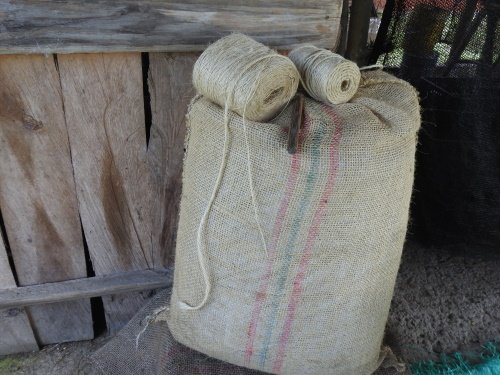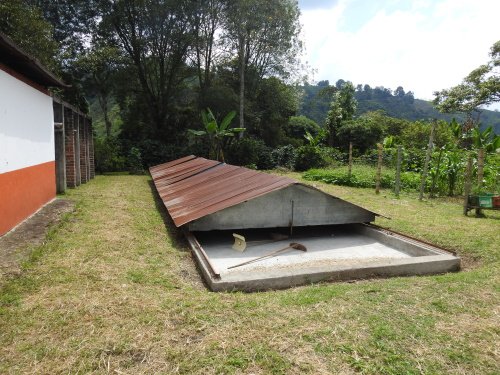First published: Sun 26 Jan 2020.
Els Slots
WHS #729: Coffee Cultural Landscape
Comments
3 comments
Solivagant
5 years, 7 months ago (Jan 27, 2020)
During your finca visit were you able to establish anything more about why the boundaries of the Nominated site were set as they were? It would seem from the infamous map, that El Recuerdo was inside the Buffer zone just to the east of the Rio Quindio (though it might have been inside the small portion of Salento Municipaility which is inside the core Zone) - correct? As you say – it would seem to possess exactly the same attributes which allowed other fincas to be included in the Core Zone (“ small scale family operations using manual labour, shade grown coffee … and … a strong community focus on coffee production in all aspects of life”). Indeed one would have thought that nearby Salento itself and the fincas in between would have been a “shoo in” for nomination. Did the Finca care? Was it politics? Did the area not want the potential restrictions of inclusion? Did they claim inclusion from simply being in the Buffer Zone?
Establishing the boundaries of this (or any other) WHS isn’t of course just a matter of getting a tick for entering them - it is part of understanding the site itself. You correctly highlight the attributes of small scale, shade grown etc – but, as per my previous review, quite large parts of the WHS do not demonstrate these attributes at all and the nomination makes a virtue of them not doing so (“Technification”)!!
Reply
Els Slots
5 years, 7 months ago (Jan 27, 2020)
No, I did not ask about that and it did not come up during the 2 hour tour.
Purely speculating here, but what may have been a factor is the (non-)alignment of these Salento farms with the 'National Federation of Coffee Growers of Colombia'. That Federation is a big player in the marketing of Colombian coffee and also worked on the nomination file. The specific farm that I visited did not agree with many of the 'improvements' suggested by the federation.
Another possible factor may be that the Salento coffee farms are more 'show farms'. They do still produce coffee (most of them), but not for the generic Colombian export. To what extent that already was the case in 2010 when the nomination file was written I do not know, the fulfillment of the tourist potential of Salento is fairly recent.
Solivagant
5 years, 7 months ago (Jan 28, 2020)
Just to clarify that further investigation confirms that the Coffee Finca El Recuerdo visited by Els is outside both the core and buffer zones of the CCL (as are all others in the Salento area). This of course in no way detracts from the value of Els’s visit and her observations both for her personally and for the rest of us. In fact, in my mind, it re-emphasises the “weakness” of this entire WHS as inscribed. If there are examples which are just as good (or even better?) outside the inscribed site then what is the inscription achieving?
Some might say that the fincas inside the inscribed area are going to be subject to stricter control in the future and are therefore being “preserved” by inscription in a way which those beyond are not. I very much doubt this and would foresee an increase in inscribed areas being “technified” in coming years since such development has actually been cemented within the current OUV (Adaptation process…. which has continued to this day” – UNESCO) ! Indeed it could be that many of the best examples of small scale, family run, eco-friendly coffee production could finish up being the specialists operating outside the inscribed area!!
Another argument could be that the inscribed area is only supposed to be “Representative” and that non inscription doesn’t imply “non value”. (“An exceptional example of a sustainable and productive cultural landscape that is unique and representative of a tradition that is a strong symbol for coffee growing areas worldwide”- UNESCO) This might have more weight if the inscription had limited itself to the “best of the best” - but it clearly hasn’t. This is particularly true of the urban areas – “mainly situated on the relatively flat tops of hills above sloping coffee fields, are characterized by the architecture of the Antioquian colonization with Spanish influence” and containing “very few contemporary incongruous additions to its traditional architectural and landscape patterns, and no substantial modifications to the small towns located in the property as well as in the buffer zone” - (UNESCO). Not true – viz Chinchina and Neira have been included with no (Chinchina – all concrete buildings, fly-overs and factories!) or very little (Neira) “Traditional architecture”. Whilst Salento has been excluded! Whatever one might think of what that town has become in terms of being a tourist honey pot, it at least contains a significant number of such buildings.



